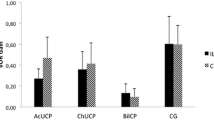A new computerized method was developed for correcting and eliminating adverse illusory (vertigo), vestibulo-opto-oculomotor (nystagmus), and vestibulo-postural (balance) reactions allowing subjects to be trained to block the generalization of an afferent signal to the effector mechanisms of the CNS by acquisition of a fixation reflex using biological feedback. Two versions of the model were used, with the aims of inducing anomalous reactions of a defined sensory modality (visual or vestibular). A total of 24 patients with peripheral and central vestibulopathies were divided into two groups, one of which was trained visually, while the other was trained using a vestibular approach. The method allows anomalous illusory and vestibulo-opto-oculomotor reactions to be produced in the subjects and for these to be inhibited by acquisition of a fixation reflex. The visual correction method was the most effective for patients with peripheral vestibulopathy, while the vestibular method was the most effective for those with central vestibulopathy.
Similar content being viewed by others
References
N. S. Blagoveshchenskaya, Otoneurological Symptoms and Syndromes [in Russian], Meditsina, Moscow (1981).
A. Broda, F. Wahlberg, and O. Pompeiano, The Vestibular Nuclei. Connections. Anatomy. Functional Correlations Russian translation], Nauka, Moscow (1966).
N. N. Vasilevskii and I. M. Kiselev, “Biocontrol with feedback: summary and new data on neuronal and systems mechanisms etc.,” in: Biocontrol: Theory and Practice [in Russian], Novosibirsk (1998), pp. 18–41.
A. M. Vein (ed.), Neurology for Doctors in General Practice, Moscow (2002).
L. N. Kornilova, A. D. Solovieva, V. V. Temnikova, et al., “Computerized tests for studies of oculomotor reactions in patients with vertigo,” Zh. Nevrol. Psikhiat., 5, 34–41 (2004).
L. N. Kornilova, I. A. Naumov, K. A. Azarov, and M. I. Alekhina, “Methodology and programmable apparatus for expert diagnostic evaluations, prognosis, monitoring, and non-pharmacological correction and elimination of perceptual and vestibulo-sensorimotor impairments in sportsmen, in: Medical-Biological Technologies for Increasing Work Capacity in Conditions of Arduous Physical Loading: A Collection of Articles [in Russian], Moscow (2007), pp. 29–39.
S. A. Likhachev and I. A. Sklyut, “A means for suppressing the vestibuloocular reflex in patients with unilateral impairments to the peripheral section of the vestibular system,” Vestn. Otorinolaringol., No. 4 (2000).
Ya. Yu. Popelyanskii, Eye Movements and Gaze [in Russian], MEDpress-Inform, Moscow (2004).
E. M. Sokhadze, M. B. Shtark, and E. I. Shulman, “Biological feedback in scientific research and clinical practice,” Byull. Sib. Otdel. Akad. Med. Nauk. SSSR, 5, 78–85 (1985).
A. R. Shakhnovich, The Brain and the Control of Eye Movements [in Russian], Meditsina, Moscow (1974).
N. V. Chernigovskaya, Adaptive Biocontrol in Neurology [in Russian], Leningrad (1978).
T. E. Cawthorne and F. S. Cooksey, “Rehabilitation in Vestibular injuries,” Proc. Roy. Soc. Med. Berlin, 39, 270–275 (1945).
M. Dix and J. Hood, Vertigo, John Wiley & Sons, Chichester, New York, Brisbane, Toronto, Singapore (1987).
J. Hood and M. Dix, “The significance of optic fixation in tests of vestibular function,” Equil. Res., 3, 95–101 (1973).
J. Hood and S. Korries, “Vestibular suppression in peripheral and central disorders,” Brain, 102, 785–804 (1979).
M. Ito, “Neural events in the cerebellar flocculus associated with adaptive modifications of the vestibule-ocular reflex,” in: Control of Gaze by Brainstem Neurons, Elsevier/North Holland, Amsterdam (1977), pp. 391–398.
N. Kornhuber, Vestibular System, Berlin (1974), Vol. 2, pp. 581–615.
L. N. Kornilova,A. D. Solovyeva, V. V. Temnikova, et al., “The use of computer stimulating programs for the study of vestibular and tracking eye functions in patients complaining of dizziness and disturbances of equilibrium,” in: The 3rd European Congress Achievements in Space Medicine into Healthcare Practice and Industry, Berlin (2005), pp. 34–35.
R. Leigh and D. Zee, The Neurology of Eye Movements, New York, Oxford (1999).
M. E. Norre and W. de Weerdt, “Treatment of vertigo,” J. Laryng. Otol., 94, 971–977 (1980).
W. J. Oosterveld, “Vertigo. Current concepts in management,” Drugs, 30, 275–283 (1985).
W. J. Oosterveld, “Current diagnostic techniques in vestibular disorders,” Acta Otolaryngol. (Stockholm), 479, Supplement, 29–34 (1991).
S. Takemory and B. Cohen, “Loss of visual suppression of vestibular nystagmus after cerebellar flocculus lesions,” Brain Res. (Amsterdam), 72, 213–224 (1974).
Author information
Authors and Affiliations
Corresponding author
Additional information
Translated from Zhurnal Nevrologii i Psikhiatrii imeni S. S. Korsakova, Vol. 109, No. 11, pp. 58–64, November, 2009.
Rights and permissions
About this article
Cite this article
Kornilova, L.N., Temnikova, V.V., Naumov, I.A. et al. Treatment of Patients with Vertigo and Balance Disorders. Neurosci Behav Physi 41, 57–63 (2011). https://doi.org/10.1007/s11055-010-9379-0
Published:
Issue Date:
DOI: https://doi.org/10.1007/s11055-010-9379-0




